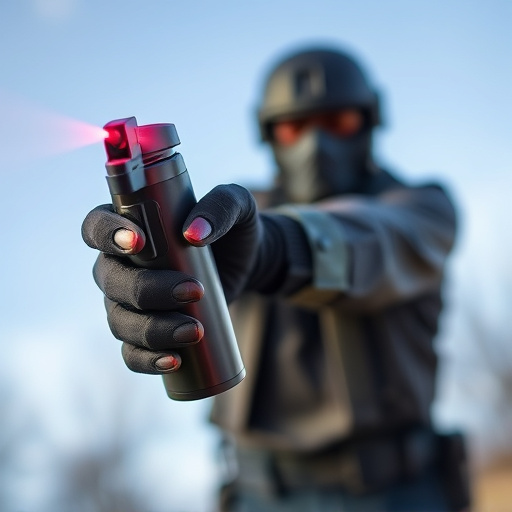Pepper spray, a common riot control tool, requires immediate medical attention upon exposure due to its eye, nose, and respiratory irritation effects. The Pepper Spray Eye Washing Procedure involves flushing the face with clean fluids for 15 minutes to neutralise irritants. Law enforcement agencies prioritise rapid action and responsible deployment through rigorous training in pepper spray handling, de-escalation techniques, and this vital eye washing protocol, adhering to strict legal frameworks to safeguard citizens' rights and prevent excessive force.
“In the realm of law enforcement, riot control agents like pepper spray serve as powerful tools for managing chaotic situations. Understanding these agents, particularly their effects and proper usage, is paramount for officers’ safety and public well-being. This article delves into the intricacies of pepper spray as a riot control agent, exploring its mechanism, eye washing procedures to counter exposure, and crucial legal considerations along with training requirements for law enforcement professionals. Learn how effective management of these agents contributes to safer communities.”
- Understanding Pepper Spray: A Riot Control Agent
- Eye Washing Procedure: Safeguarding Against Pepper Spray Exposure
- Legal Considerations and Training Requirements for Law Enforcement Use
Understanding Pepper Spray: A Riot Control Agent
Pepper spray, a common riot control agent, is a powerful tool used by law enforcement to subdue and disperse crowds during civil unrest or large-scale protests. It works by irritating the eyes, nose, and respiratory system, causing temporary blindness and difficulty breathing. This non-lethal weapon offers an effective means of crowd control while minimising physical harm.
The eye washing procedure is a critical component of pepper spray safety. If used, individuals must immediately seek medical attention and follow specific steps to flush out the irritants. Water or clean fluids should be poured over the face, with particular emphasis on the eyes, for at least 15 minutes. This process helps to neutralise the effects of the spray and prevent further discomfort or damage. Proper training in pepper spray handling and de-escalation techniques is essential for law enforcement officers to ensure they use this agent responsibly and minimise potential harm to both suspects and bystanders.
Eye Washing Procedure: Safeguarding Against Pepper Spray Exposure
Eye washing is a critical procedure in riot control situations, as it offers a means to alleviate discomfort and protect against the potential long-term effects of pepper spray exposure. When eyes are exposed to pepper spray, irritant chemicals can cause severe pain, temporary blindness, and even lasting eye damage. The Pepper Spray Eye Washing Procedure involves a systematic approach to quickly flush out the irritants.
Law enforcement agencies emphasize the importance of rapid action. In high-pressure riot control scenarios, officers must be trained to administer eye washes promptly. This procedure typically entails using clean water or specialized eye wash solutions to irrigate the eyes for at least 15 minutes. By following this protocol, first responders can help mitigate the impact of pepper spray, ensuring the safety and well-being of both officers and individuals affected during disturbances.
Legal Considerations and Training Requirements for Law Enforcement Use
The legal considerations surrounding riot control agents, such as pepper spray, are stringent to ensure their responsible use by law enforcement. Each jurisdiction has its own set of regulations dictating when and how these agents can be deployed. Officers must understand not only the specific laws in their area but also the broader legal framework protecting citizens’ rights against excessive force. The misuse of riot control agents can lead to severe consequences, including civil lawsuits and damage to an officer’s career.
Training is a cornerstone of safe and effective use. Law enforcement agencies mandate rigorous training programs that cover not just the mechanics of deploying pepper spray but also de-escalation techniques and situational awareness. Officers learn the eye washing procedure, which involves specific steps to mitigate the effects of pepper spray on the eyes, ensuring the safety of both suspects and officers. This comprehensive approach aims to minimise risks while empowering law enforcement to maintain public order during high-pressure situations.
Pepper spray, as a riot control agent, presents both powerful tools and complex legal considerations for law enforcement. Understanding its effects and implementing rigorous training, especially in eye washing procedures, are essential to ensure safe and lawful use. By adhering to these guidelines, law enforcement agencies can effectively manage crowd control while mitigating risks and respecting individual rights.
